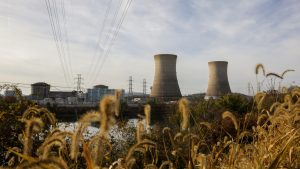In the wake of falling energy prices, both the Shell (LSE:SHEL) and BP (LSE:BP.) share prices have taken a tumble in recent times.
A barrel of Brent crude is currently (15 November) changing hands for around $71.50, approximately 22% less than in April. Although wholesale gas prices have been a bit more stable, they’re now 85% lower than when they spiked in January.
Cheaper energy has led to the Shell share price falling 10% over the past six months. BP’s is down 23%.
But which is the best deal? I’m going to look at three popular measures to come up with my own opinion.
1. Price-to-book (P/B) ratio
At 30 September, Shell had a book value of $189.5bn (£149.5bn using the current dollar-sterling exchange rate) and BP’s balance sheet was showing $79.9bn (£63bn).
Today, their stock market valuations are £156.3bn and £61bn, respectively.
With a P/B of 1.05, Shell is slightly more expensive (BP: 0.97).
But both are nearly at one, which means if they ceased trading today, sold all of their assets, and used the proceeds to clear their liabilities, for each share they hold, shareholders would receive cash close to the current market price.
2. Price-to-earnings (P/E) ratio
For energy giants, the P/E ratio can be problematic. Due to their sensitivity to fluctuating oil and gas prices, their earnings can be volatile.
But looking at earnings per share over the four quarters to 30 September 2024, Shell has a P/E ratio of 13.3, compared to 30.7 for BP.
This disparity reflects particularly weak earnings for the latter in the second and third quarters of 2024. As the table below shows, Shell’s performance has been more consistent.
| Adjusted earnings per share | Q4 2023 | Q1 2024 | Q2 2024 | Q3 2024 |
|---|---|---|---|---|
| Shell ($) | 2.20 | 2.38 | 1.96 | 1.90 |
| BP (cents) | 2.15 | 13.25 | (0.78) | 1.23 |
3. Dividend yield
Income investors usually consider a stock’s yield to assess value for money.
Based on dividends paid over the last four quarters, Shell is presently yielding 4.3%, while BP is offering a return of 6.1%.
Both are higher than the FTSE 100 average of 3.8%.
Of course, payouts are never guaranteed.
BP’s higher yield could reflect its more volatile earnings. Shareholders are demanding a bigger return to hold its stock.
My verdict
My analysis is inconclusive.
Based on their assets and liabilities, both energy giants are fairly valued. But on an earnings basis, BP’s share price appears to be more expensive. And yet it offers better value when it comes to dividends.
Investing in the oil and gas sector is full of risks. It’s impossible to accurately predict future energy prices because they’re determined by an unpredictable and complex interaction of various economic and political factors.
However, when everything’s in their favour, these companies are hugely cash generative. In 2022, they produced a combined $109.3bn of cash from their operating activities.
But over the past four quarters, it’s dropped to $83.3bn. It’s therefore not surprising that their share prices have fallen back from recent highs.
History tells me that the good times will return again.
Most forecast ‘peak gas’ to come before 2035. And various estimates suggest that the demand for oil will continue to rise until 2030-2050. However, such a wide range of predictions is one illustration as to why nothing’s certain when it comes to the sector.
And as a risk-averse investor, uncertainty makes me nervous. I’m therefore not going to invest in either.
This post was originally published on Motley Fool







